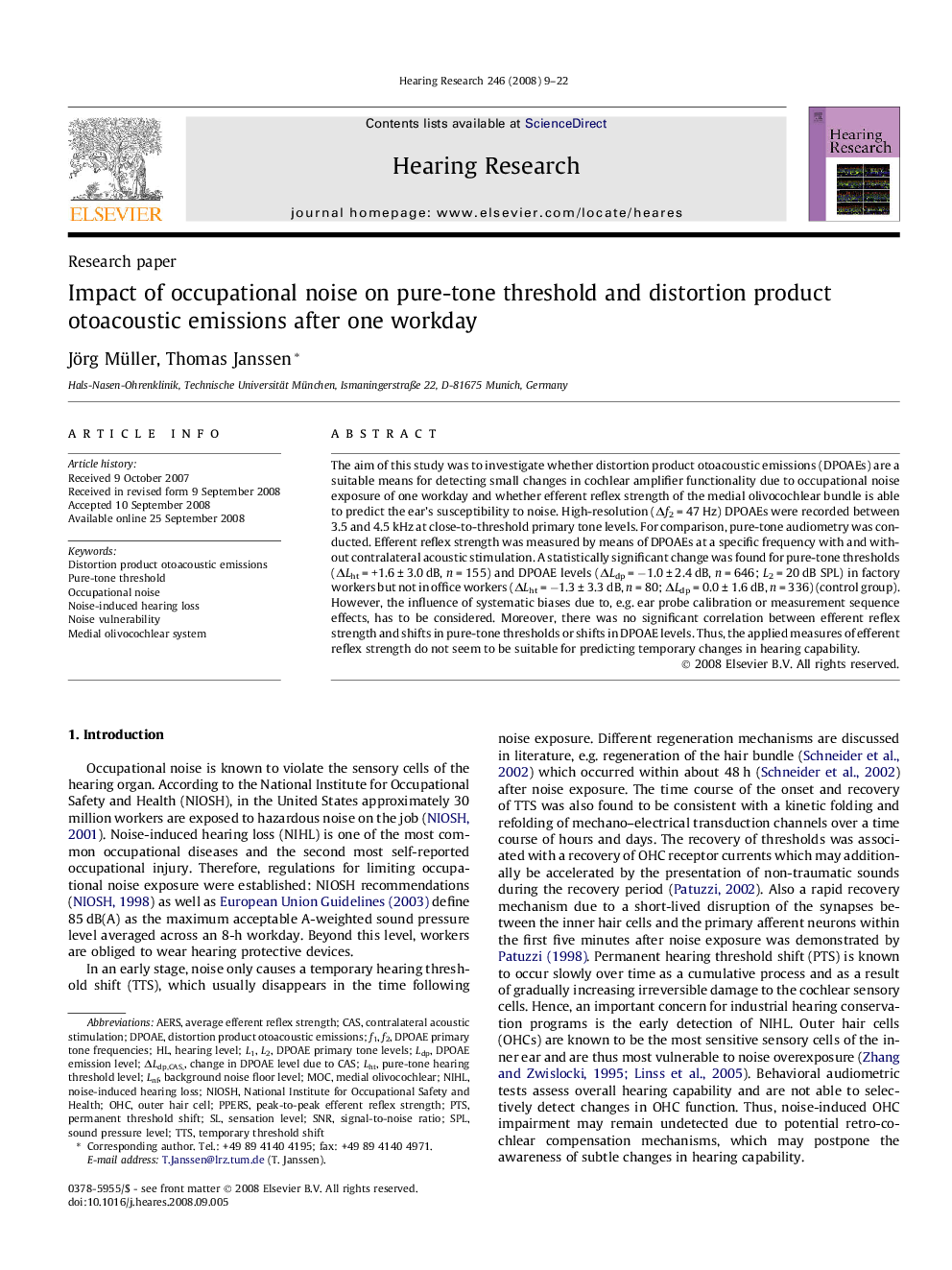| Article ID | Journal | Published Year | Pages | File Type |
|---|---|---|---|---|
| 4356025 | Hearing Research | 2008 | 14 Pages |
Abstract
The aim of this study was to investigate whether distortion product otoacoustic emissions (DPOAEs) are a suitable means for detecting small changes in cochlear amplifier functionality due to occupational noise exposure of one workday and whether efferent reflex strength of the medial olivocochlear bundle is able to predict the ear's susceptibility to noise. High-resolution (Îf2 = 47 Hz) DPOAEs were recorded between 3.5 and 4.5 kHz at close-to-threshold primary tone levels. For comparison, pure-tone audiometry was conducted. Efferent reflex strength was measured by means of DPOAEs at a specific frequency with and without contralateral acoustic stimulation. A statistically significant change was found for pure-tone thresholds (ÎLht = +1.6 ± 3.0 dB, n = 155) and DPOAE levels (ÎLdp = â1.0 ± 2.4 dB, n = 646; L2 = 20 dB SPL) in factory workers but not in office workers (ÎLht = â1.3 ± 3.3 dB, n = 80; ÎLdp = 0.0 ± 1.6 dB, n = 336) (control group). However, the influence of systematic biases due to, e.g. ear probe calibration or measurement sequence effects, has to be considered. Moreover, there was no significant correlation between efferent reflex strength and shifts in pure-tone thresholds or shifts in DPOAE levels. Thus, the applied measures of efferent reflex strength do not seem to be suitable for predicting temporary changes in hearing capability.
Keywords
PTSTTSMOCLDPAERSF1, F2OHCNIHLDPOAELNFSNRSPLLHTCASmedial olivocochlearnoise-induced hearing lossDistortion product otoacoustic emissionsContralateral acoustic stimulationPermanent threshold shiftTemporary threshold shiftOccupational noisesensation levelhearing levelSound pressure levelouter hair cellMedial olivocochlear systemNational Institute for Occupational Safety and HealthSignal-to-noise ratioNIOSH
Related Topics
Life Sciences
Neuroscience
Sensory Systems
Authors
Jörg Müller, Thomas Janssen,
